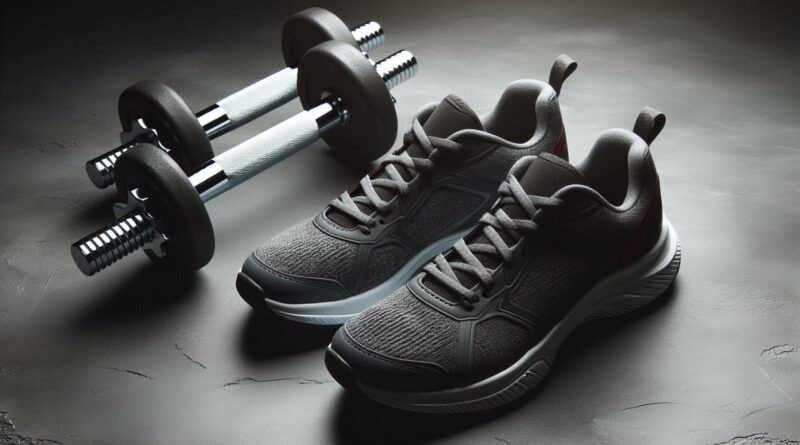Cardio vs Weights for Body Composition: Are You Training for the Look You Want – or Just Burning Time?
Cardio vs Weights – you’re doing both, sweating through sessions, grinding through reps, watching the scale, and still wondering: is this actually working? In the world of body composition, effort doesn’t always equal outcome. And in comp prep, chasing the burn can cost you the look. This article is your wake-up call: it’s time to train for the physique you want, not just the fatigue you feel.
Weights Build the Look – Cardio Doesn’t Shape You
You’re not just trying to lose weight. You’re sculpting a physique. That shape—the lines, the density, the presence—is built in the weight room. Cardio might help you burn energy, but it doesn’t build muscle. And without muscle, there’s no shape to reveal.
In comp prep, this distinction becomes critical. When calories drop and fatigue rises, it’s tempting to lean harder into cardio. It feels productive. It feels easier than pushing heavy weight. But the look you’re chasing was built by resistance training—and it’s preserved by it too.
That’s why understanding the real dynamic of cardio vs weights is essential. It’s not a battle—it’s a balance. And that balance should always prioritize the training that shapes your physique, not just the movement that burns calories.
That doesn’t mean lifting recklessly. As prep progresses, your body changes. Recovery slows. Fatigue accumulates. Smart athletes adapt—not by backing off intensity, but by modifying volume, exercise selection, and recovery strategies. You’re not just training hard—you’re training with precision.
Before you add more cardio, consider whether it’s supporting the physique you’ve built—or simply satisfying the urge to do more.
Nutrition Is the Driver – Cardio Is the Lever
Fat loss doesn’t start with cardio. It starts with your plate. Nutrition is the primary driver of body composition change—especially in comp prep, where every gram and calorie is accounted for. Cardio can help, but it’s not the engine. It’s the lever you pull when needed.
That’s where many athletes get stuck. They hit a plateau, feel the pressure, and start stacking cardio sessions like bricks. But without adjusting nutrition, the foundation doesn’t shift. Food drives fat loss. Training shapes the outcome.
Used strategically, cardio can be a powerful tool. It allows you to burn extra energy without slashing more calories from your diet. It can support a deficit, preserve fullness, and even offer mental clarity during prep. But it should never replace nutritional precision—or become a punishment for what’s on your plate.
So before you add more movement, ask yourself: Is my nutrition dialed in? Or am I trying to outrun what I haven’t adjusted?
The “Look” vs The “Burn”
There’s a difference between training to feel tired and training to look ready. It’s easy to chase the burn—more cardio, more sweat, more soreness. It feels like progress. It feels like discipline. But fatigue isn’t the goal. The look is.
In comp prep, this distinction matters more than ever. The athlete who trains for exhaustion might miss the physique they’ve worked so hard to build. The athlete who trains for the look—who protects muscle, manages fatigue, and programs with purpose—is the one who steps on stage with presence.
This isn’t about doing less. It’s about doing what matters. The burn has its place. It can be motivating, even therapeutic. But it’s not the measure of success. The mirror is. And the mirror reflects intention, not just intensity.
It’s worth pausing to consider: are you chasing the look—or just chasing the burn?
Managing Fatigue: Cardio Without Compromise
Prep demands a lot. Energy drops. Recovery slows. And the temptation to “do more” creeps in. But more isn’t always better—especially when it comes to cardio. If it’s not programmed with care, cardio can interfere with your weight training, compromise recovery, and push fatigue past the point of usefulness.
That’s why cardio should be treated like any other training variable: intentional, adjustable, and aligned with your goals. It’s not just about burning calories—it’s about preserving performance. If your cardio leaves you too depleted to lift with intensity, it’s working against you.
Programming with purpose means choosing modalities that match your recovery capacity, timing sessions to avoid overlap with key lifts, and adjusting frequency based on how your body responds. Whenever possible, keep cardio separate from your weight training. This allows each session to serve its purpose without competing for energy or focus. And if you do need to combine them, prioritize weights first—so you’re fresh for the work that shapes your physique.
Understanding the dynamic of cardio vs weights is key here. It’s not about choosing sides—it’s about managing both in a way that protects your progress and respects your recovery.
Fatigue is part of the process. But unmanaged fatigue is a liability. Your job isn’t to avoid it—it’s to regulate it. And that starts with treating cardio as a tool, not a test.

Heavy Weights in a Deficit: Why It Still Matters
When calories drop, everything feels heavier. The barbell. The mornings. The mindset. And yet, this is exactly when heavy lifting matters most. The muscle you’ve built—the shape you’re sculpting—was created through tension. And tension is what preserves it.
It’s tempting to back off. To trade intensity for what feels easier—lighter loads, longer sessions, movements that don’t demand as much. But prep isn’t just about staying active. It’s about protecting the look. And that look was built by lifting with intent, not just going through the motions.
That doesn’t mean pushing recklessly. Smart athletes adapt. They modify exercises, reduce volume, and regulate fatigue. But they don’t abandon intensity. Because intensity is the signal that tells your body: this muscle still matters.
Heavy lifting in a deficit isn’t easy. But it’s essential. It’s the difference between arriving with shape—and arriving without it.
Smart Adaptation: Injury Prevention and Intensity Modulation
Intensity matters—but so does longevity. As prep progresses, your body becomes more vulnerable. Recovery slows. Joints ache. Sleep fragments. And the risk of injury rises. That’s not a sign of weakness. It’s a signal to adapt.
Smart athletes don’t abandon intensity—they refine it. They choose movements that allow for load without strain. They reduce volume when needed. They swap high-risk exercises for safer alternatives that still deliver tension. They regulate fatigue not by backing off—but by training with precision.
Sometimes, that precision means pulling back on cardio—not because it’s unimportant, but because it’s competing with recovery. In the ongoing balance of cardio vs weights, reducing cardio volume can be a strategic move to preserve lifting intensity. When energy is limited, prioritizing the training that shapes your physique isn’t just smart—it’s essential.
This is where programming becomes personal. What worked in week 4 might not work in week 10. Your body changes. Your stress tolerance shifts. And your training should reflect that. Adaptation isn’t a compromise—it’s a strategy.
You’re not just trying to make it to the stage. You’re trying to arrive with shape, strength, and confidence. And that means knowing when to push—and when to pivot.
Prep-Specific Periodisation: Flexibility Across the Phases
Prep isn’t linear. It’s a series of shifting demands, each phase asking something different of your body—and your mindset. What works in week one won’t work in peak week. And that’s not a failure of discipline. It’s a reflection of intelligent periodisation.
Early prep is often about building momentum. Cardio ramps up. Lifting stays heavy. Nutrition tightens. Mid-phase, fatigue starts to creep in. You’re still pushing—still showing up, still grinding—but the strain begins to accumulate. Adjustments begin. Recovery becomes more important. Later in prep, fatigue management takes priority—cardio may back off to preserve energy and ensure weight training remains the focus. Then comes peak week—the final refinement. Cardio is tapered back, and lifting intensity drops to promote fullness and reduce inflammation.
Understanding this arc helps you make smarter decisions. It’s not about sticking rigidly to a plan—it’s about responding to your body with purpose. In the ongoing balance of cardio vs weights, the ratio will shift. And that shift should reflect your phase, your physique, and your readiness.
Flexibility isn’t a lack of structure. It’s the structure that adapts. And in prep, that’s what keeps you progressing—not just physically, but mentally.
The NEAT Factor: What You’re Not Tracking Might Be Costing You
Not all movement happens in the gym. And not all energy expenditure comes from cardio. NEAT—non-exercise activity thermogenesis—is the quiet contributor. It’s the steps you take between sets, the pacing during phone calls, the fidgeting, the cleaning, the standing. It’s everything that isn’t formal exercise—and it matters more than most athletes realize.
In early prep, NEAT is often high. You’re energized, motivated, moving more without thinking. But as fatigue sets in, NEAT tends to drop. You sit more. You slow down. You conserve. And that quiet reduction can impact your total daily energy expenditure more than a missed cardio session.
This is where awareness becomes powerful. Tracking steps, noticing patterns, and staying gently active throughout the day can help maintain output without adding formal cardio. In the broader conversation of cardio vs weights, NEAT is the third variable—subtle, silent, but significant.
You don’t need to obsess. You just need to notice. Because sometimes, what’s costing you progress isn’t what you’re doing in the gym—it’s what you’ve stopped doing outside of it.
Cardio vs Weights: Train Smart, Reveal the Look

You’ve seen the difference between chasing fatigue and sculpting with intention. You’ve learned how nutrition drives fat loss, how cardio supports—not replaces—your strategy, and how heavy lifting preserves the shape you’ve built. You’ve explored NEAT, adaptation, and phase-specific planning. Now it’s time to act.
This isn’t about choosing sides in the cardio vs weights debate. It’s about knowing how to balance both—strategically, seasonally, and with purpose.
✅ Check our contest calendar—your next opportunity to step up might be closer than you think.
📲 Follow us on Instagram for weekly tips, athlete spotlights, and behind-the-scenes prep wisdom.
👥 Join our Facebook group to connect with athletes, coaches, and fans who believe in bodybuilding as a sport of meaning, belonging, and transformation.
You won’t lose progress by training smarter. You’ll finally reveal what you’ve built.
Train with purpose. Prep with precision. Show up with shape.
P.S. The body follows effort, but the shape answers intention—and intention, when quiet and true, carves what no volume ever could.


Pingback:Contest Prep Fatigue: How to Train Smarter and Hold Your Edge